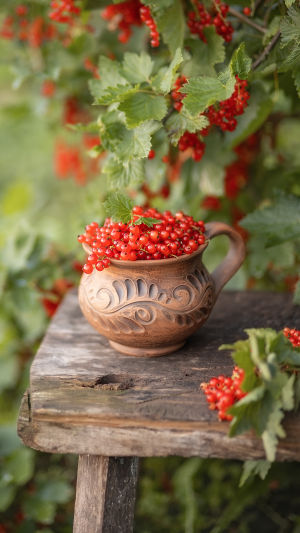Fruits are an integral part of our daily diet, and among them, berries hold a significant position.
However, it might come as a surprise that some fruits commonly assumed to fall outside the category of berries belong to this group.
Today, we embark on a journey to uncover these fascinating discoveries, aiming to redefine our understanding of fruits.
First and foremost, let's delve into the definition of berries. Berries constitute a diverse range of fruits characterized by their petite size, soft exterior, and juicy interior. Typically, they encase seeds within a pulpy flesh, embodying a distinct botanical structure that encompasses many fruits we commonly encounter.
<h3>1. Kiwi</h3>
Kiwis, often celebrated for their tart flavor and vibrant green flesh, emerge as a surprising member of the berry family. Not only do they dazzle the taste buds, but they also pack a powerful nutritional punch.
Providing more than twice the recommended daily intake of vitamin C, kiwis stand as formidable contenders in the realm of dietary fiber.
According to a research report by the US Department of Agriculture, kiwis boast an antioxidant profile that rivals niche fruits such as prickly pears and blueberries, surpassing everyday fruits like apples, pears, watermelons, and citrus varieties.
Renowned for their ability to combat scurvy, kiwifruits also contribute to mood stabilization, cholesterol reduction, digestion improvement, constipation prevention, thirst-quenching, diuretic properties, and heart health promotion.
<h3>2. Pomegranate</h3>
Pomegranates, with their ruby-red arils bursting with flavor, represent yet another surprising inclusion in the berry category. Abundant in nutrients and boasting one to two times the vitamin C content of apples and pears, pomegranates offer a versatile culinary experience.
From the medicinal applications of their peel to the consumption of their juicy seeds or the extraction of their refreshing juice, every part of the ripe pomegranate contributes to its nutritional value.
Studies underscore the presence of organic acids, sugars, proteins, fats, vitamins, and minerals such as calcium, phosphorus, and potassium in pomegranates.
Within traditional Chinese medicine, pomegranates are revered for their heat-clearing, detoxifying, liver-calming, blood-replenishing, blood-circulation-activating, and diarrhea-stopping properties, making them particularly beneficial for individuals with jaundice hepatitis, asthma, chronic diarrhea, and prolonged menstrual periods.
<h3>3. Blueberry</h3>
Blueberries, celebrated for their delightful taste and nutritional prowess, emerge as quintessential members of the berry family.
Each 100 grams of fresh blueberries offers approximately 0.27 grams of protein, around 6 grams of carbohydrates, and a host of organic acids including citric and malic acid.
Furthermore, blueberries contain noteworthy levels of carotene, vitamin C, and an array of amino acids essential for human health.
Rich in vital nutrients such as vitamin D, calcium, phosphorus, iron, zinc, selenium, and superoxide dismutase (SOD), blueberries also harbor anthocyanins, bioactive compounds renowned for their role in preventing vision loss, vascular sclerosis, heart disease, aging, and memory decline.
It is no wonder that blueberries have garnered acclaim as one of the top ten most nutritious foods by Time Magazine in the United States.
<h3>4. Strawberry</h3>
Strawberries, with their luscious red hue and sweet-tart flavor, represent a beloved member of the berry family.
Packed with a wide range of nutrients like vitamins C, A, E, PP, B1, B2, and carotene, along with tannic acid, aspartic acid, pectin, cellulose, folic acid, iron, calcium, ellagic acid, and anthocyanin, strawberries provide numerous health benefits.
Regular consumption of strawberries contributes to alleviating night blindness, maintaining epithelial tissue health, enhancing eyesight, supporting liver function, and fostering growth and development. Furthermore, the rich dietary fiber content of strawberries promotes gastrointestinal motility and alleviates constipation.
These examples show the variety of fruits in the berry category. While their outward appearances and structural compositions may vary, they share common characteristics such as tender skin, succulent flesh, and seeds enveloped in pulp.
So, the next time you enjoy strawberries, pomegranates, or blueberries and strawberries, think about the healthy treat you're having!





